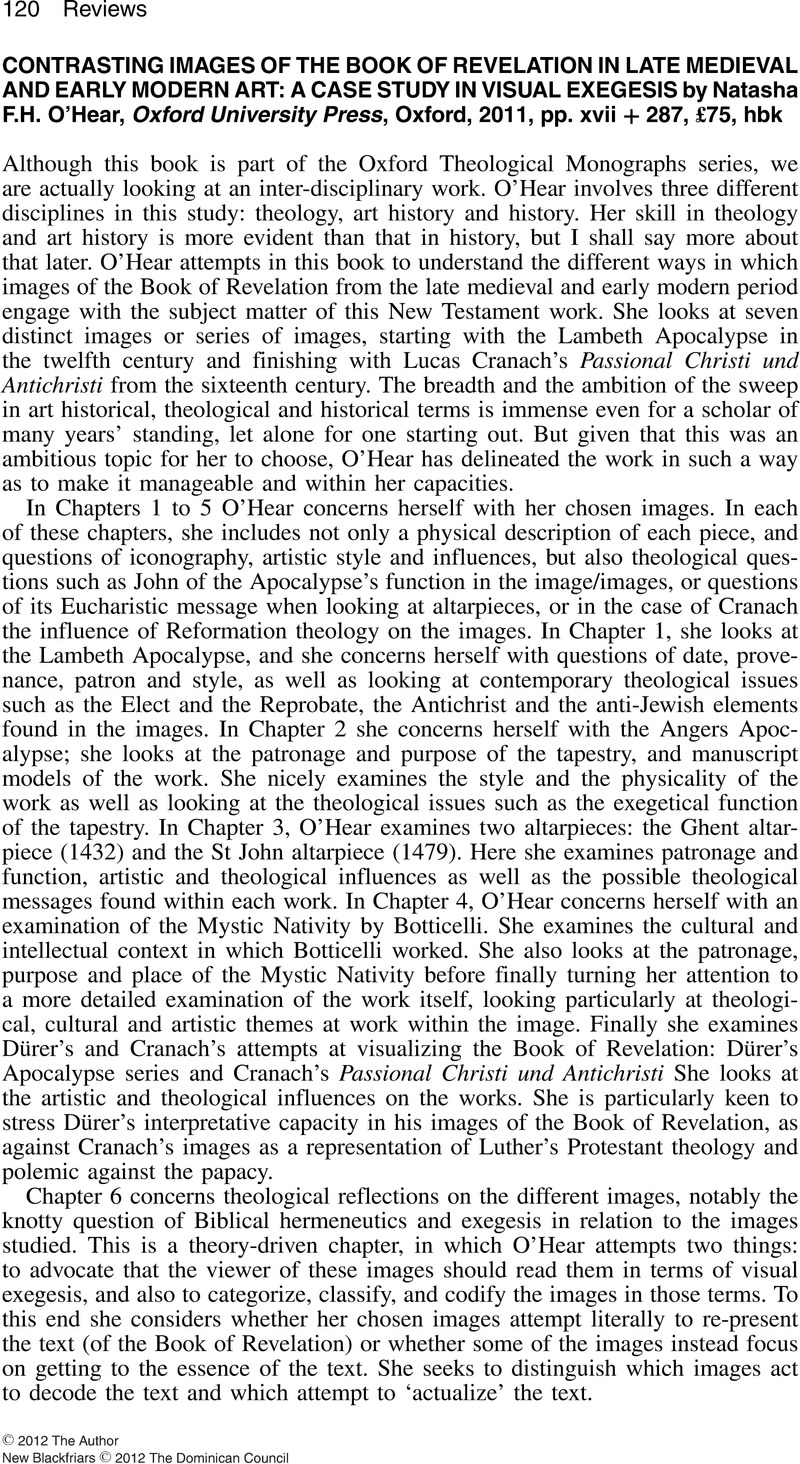No CrossRef data available.
Article contents
Contrasting Images of The Book of Revelation in Late Medieval and Early Modern Art: A Case Study in Visual Exegesis by Natasha F.H. O’Hear, Oxford University Press, Oxford, 2011, pp. xvii + 287, £75, hbk
Review products
Contrasting Images of The Book of Revelation in Late Medieval and Early Modern Art: A Case Study in Visual Exegesis by Natasha F.H. O’Hear, Oxford University Press, Oxford, 2011, pp. xvii + 287, £75, hbk
Published online by Cambridge University Press: 01 January 2024
Abstract
An abstract is not available for this content so a preview has been provided. Please use the Get access link above for information on how to access this content.

- Type
- Reviews
- Information
- Copyright
- Copyright © 2012 The Author. New Blackfriars © 2012 The Dominican Council


